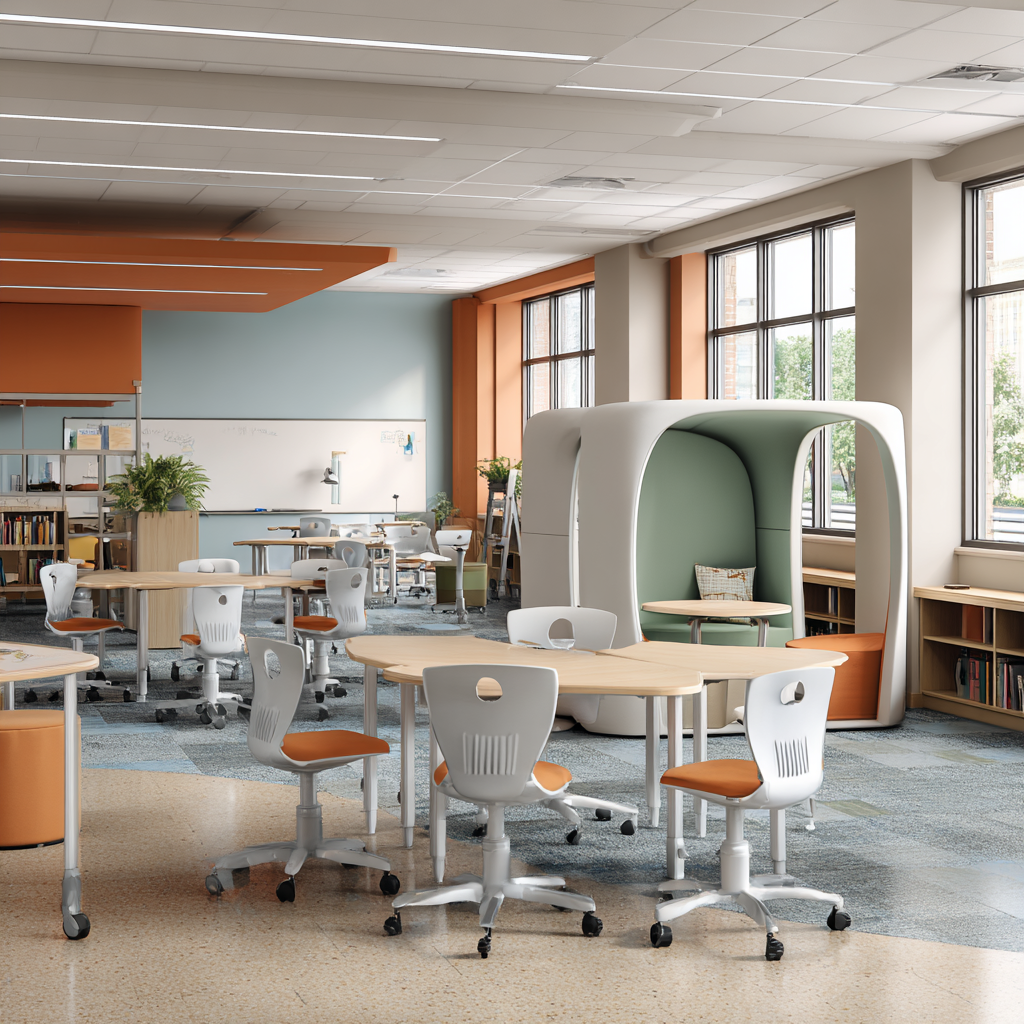Spatial strategy for high-impact learning, how to design classrooms the right way.
Exploring the rise and fall of open‑plan classrooms, the return to single‑cell designs, and how to integrate agile zones without repeating past mistakes.
As educators seek environments that foster learning, the pendulum has swung from traditional single-cell classrooms to expansive open-plan spaces, and now toward a hybrid: single-cell classrooms enriched with agile focus zones. Here’s why this evolution matters, and how to craft classrooms that truly support student outcomes.
1. Open‑Plan Classrooms: A Well‑Intentioned Experiment That Stumbled
Inspired by progressive ideals, open-plan classrooms, popularised in the UK in the late 1980s and New Zealand (post), promised flexibility, collaboration, and reduced teacher isolation. Yet early academic feedback was lukewarm:
Teachers reported elevated stress levels (55% in one study) openlearningspaces.blogspot.com.
Acoustic and visual distractions made focus difficult, especially for younger students .
Trials often reverted back when schools lacked proper teacher training or acoustic design.
2. The UK & International Evidence: Quiet Wins
A robust 2010 review by Shield, Greenland & Dockrell highlighted consistent issues: noise, poor classroom management, and anxiety—especially among neurodiverse students. Between 2016–19, University of Melbourne research found that enclosing partitions doubled reading fluency growth. In the UK, Peter Barrett at the University of Salford showed that well-designed classrooms could raise pupil progress by up to 16 %, without the need for large-scale rebuilds. The data is simple, and NZ’s own results aren’t exactly glowing reports.
3. When Open‑Plan Backfires: Real Stories
Shirley Boys High School in Christchurch abandoned open-plan in 2025, investing NZ$800K to rebuild walls—citing excessive distractions
Educators in Australia lamented chaotic noise, wandering students, and teacher burnout.
4. Return to Single‑Cell with Agile Zones: Balance Over Extremes
Rather than choosing between rigid walls or boundaryless spaces, the sweet spot lies in single-cell classrooms enhanced by agile zones:
Acoustic partitions or modular walls allow teachers to adapt the space for whole-group sessions, small-group collaboration, or quiet individual work.
Agile zones like breakout nooks, focus pods, or sensory corners (support diverse learning styles without the pitfalls of full openness).
Teachers gain control, students receive structure and choice, and neurodiverse needs are respected.
These strategies align with flexible learning space research: enclosed classrooms with operable partitions offer both connection and calm.
5. Why This Matters
By balancing structure and flexibility, this spatial strategy avoids the noise and disengagement of open-plan fads, while retaining the benefits of collaboration and choice. When backed by UK research and practical design (like the Salford study’s 16% learning boost), this is more than theory; it’s a strategic spatial revolution.
Why Strategists & Designers Should Care
I’m not selling furniture or walls. We are offering learning-enhancing spatial strategies. Our promise? Classrooms that are rooted in evidence, responsive to varied learners, and ready for the future. Not outdated trends. In short: Spatial strategy for high-impact learning.
Curious to discuss evidence sources, agile-room toolkits, or ROI-driven design briefs? Let's connect.
-Laura Heynike
Pocketspace classroom sketch

